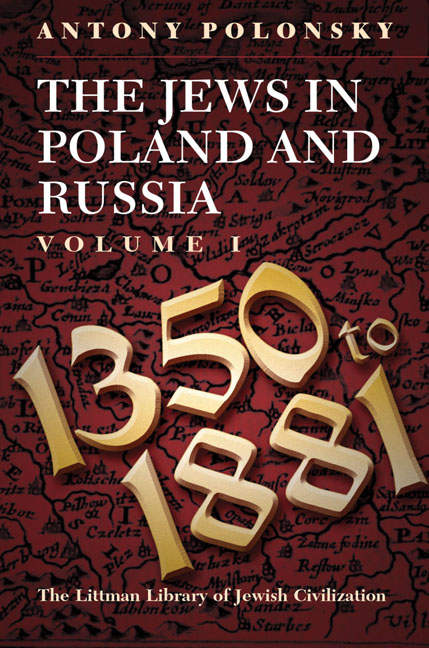Book contents
- Frontmatter
- Dedication
- Acknowledgements
- Contents
- List of Maps
- List of Tables
- Note on Transliteration
- Note on Place Names
- Maps
- General Introduction
- PART I JEWISH LIFE IN POLAND–LITHUANIA TO 1750
- PART II ATTEMPTS TO TRANSFORM AND INTEGRATE THE JEWS, AND THE JEWISH RESPONSE, 1750–1880
- Glossary
- Bibliography
- Index
5 - Religious and Spiritual Life
- Frontmatter
- Dedication
- Acknowledgements
- Contents
- List of Maps
- List of Tables
- Note on Transliteration
- Note on Place Names
- Maps
- General Introduction
- PART I JEWISH LIFE IN POLAND–LITHUANIA TO 1750
- PART II ATTEMPTS TO TRANSFORM AND INTEGRATE THE JEWS, AND THE JEWISH RESPONSE, 1750–1880
- Glossary
- Bibliography
- Index
Summary
When the Baal Shem had a difficult task before him, he would go to a certain place in the woods, light a fire and meditate in prayer—and what he had set out to perform was done. When a generation later the ‘Maggid’ of Meseritz was faced with the same task he would go to the same place in the woods and say: We can no longer light the fire, but we can still speak the prayers—and what he wanted done became reality. Again a generation later Rabbi Moshe Leib of Sassov had to perform this task. And he too went into the woods and said: We can no longer light a fire, nor do we know the secret meditations belonging to the prayer, but we do know the place in the woods to which it all belongs—and that must be sufficient; and sufficient it was. But when another generation had passed and Rabbi Israel of Rishin was called upon to perform the task, he sat down on his golden chair in his castle and said: We cannot light the fire, we cannot speak the prayers, we do not know the place, but we can tell the story of how it was done. And, the story-teller adds, the story which he told had the same effect as the actions of the other three.
GERSHOM SCHOLEM, Major Trends in Jewish MysticismJEWISH RELIGIOUS TRADITIONS
RELIGION played a central role in the lives of the Jews of Poland–Lithuania in the early modern period, as it had continued to do in Jewish history generally since the end of a significant Jewish presence in the land of Israel after the Arab conquests. The nineteenth-century Jewish historian Heinrich Graetz described it as ‘a history of suffering and of religious literature’, while Salo Baron entitled his monumental unfinished work A Social and Religious History of the Jews. There has been a tendency to write this history statically—to see normative Jewish religious practice as unchanging from the period of the Mishnah and Talmud. In addition, historical investigation is complicated by the absence in Jewish religious tradition of a clearly formulated creed.
- Type
- Chapter
- Information
- The Jews in Poland and RussiaVolume I: 1350 to 1881, pp. 114 - 157Publisher: Liverpool University PressPrint publication year: 2009

